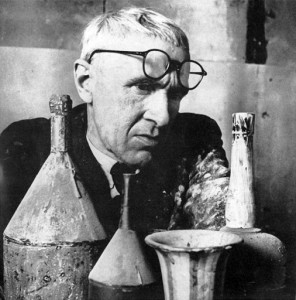Giorgio Morandi
Profile
Printmaker and painter
Born in Bologna in 1890, Giorgio Morandi worked in his father’s commercial office at the age of sixteen. In 1907 he enrolled at the Accademia di Bella Arti in Bologna, graduating in 1913. He was influenced by the Italian masters Paolo Uccello, Giotto, Masaccio and Piero della Francesca, also by Chardin, Corot and Cézanne. Morandi produced, almost exclusively, still lifes and landscapes, with the exception of a few self-portraits.
In 1914 Morandi exhibited at the second Rome Secession and, during the same year, he was appointed Instructor of Drawing for elementary schools in Bologna, a position he held until 1929. In 1915, he joined the Army but was discharged as the result of a breakdown.
Morandi became affiliated with the journal, “Valori Plastici” in 1918 and his work was included in the group’s exhibition, which travelled throughout Germany in 1921. In the early 1920s, Morandi had abandoned the use of references to Metaphysical painting in his work and he began to focus on subtle gradations of hue, tone and objects arranged in a unifying atmospheric haze. In 1926 and 1929 Morandi showed in the “Novecento Italiano” exhibitions and in 1927 he exhibited at the “Seconda Esposizione dell’Incisione Moderna” in Florence.
Morandi was the Professor of Printmaking at the Accademia di Bella Arti in Bologna from 1930 to 1956, when he visited Paris for the very first time.
